Making Magic: The Art of Illusion Paintings
Welcome to the enchanting realm of illusion paintings, where reality blurs with fantasy and the boundaries of perception are delightfully challenged. These captivating artworks have a unique ability to mesmerize viewers, drawing them into a world where the ordinary transforms into the extraordinary. Imagine standing before a canvas that seems to leap out at you, or a mural that creates the illusion of depth so profound that you feel as if you could step right into it. This is the magic of illusion painting, an art form that has captivated audiences for centuries.
At its core, illusion painting is not just about creating pretty pictures; it’s about crafting experiences that provoke thought and elicit emotion. Artists employ a variety of techniques to create these stunning visual effects, and the result is a dialogue between the artwork and the observer. Have you ever found yourself questioning what is real and what is merely an illusion? This is the power of these artworks. They invite you to engage, to explore, and to interpret the world through a different lens.
Illusion paintings have a rich history that dates back to ancient civilizations, where artists first began experimenting with perspective and spatial representation. Over the years, this genre has evolved through various cultures and movements, each adding its own unique twist to the art form. From the grand frescoes of the Renaissance to the vibrant street art of today, illusion paintings continue to inspire and intrigue. They challenge our perceptions and encourage us to look beyond the surface, reminding us that art is not just something to be viewed, but something to be experienced.
As we delve deeper into this fascinating subject, we will explore the techniques that make illusion paintings so mesmerizing, the historical significance of this art form, and the profound impact it has on viewers. Whether you are an art enthusiast, a curious observer, or an aspiring artist, there’s something magical waiting for you in the world of illusion paintings.
Illusion paintings have a rich history, dating back to ancient civilizations. This section examines their evolution through different cultures and time periods, highlighting key artists and movements that shaped the genre.
Artists employ various techniques to create stunning illusions. Here, we explore methods such as trompe-l'œil, perspective manipulation, and color theory that contribute to the enchanting effects of these artworks.
Trompe-l'œil, meaning deceive the eye, is a prominent technique in illusion painting. This subsection explains how artists use realistic imagery to create the illusion of three-dimensional space on a flat surface.
This section showcases notable historical examples of trompe-l'œil in architecture and painting, illustrating how artists have used this technique to enhance visual storytelling and spatial depth.
Modern artists continue to innovate with trompe-l'œil, applying it in contemporary settings. This subsection discusses how this technique is used in murals, installations, and digital art to captivate audiences.
Perspective manipulation is crucial in creating depth and realism. This part examines how artists utilize linear and atmospheric perspective to enhance the illusion of space in their paintings.
Illusion paintings evoke strong emotional responses and curiosity. This section discusses the psychological effects these artworks have on viewers, including the sense of wonder and the challenge of perception.
The interactive nature of illusion paintings invites viewers to engage actively. This subsection explores how artists design their works to encourage exploration and personal interpretation from the audience.
Illusion paintings have permeated popular culture, influencing various media. This section highlights their presence in films, advertising, and social media, showcasing their enduring appeal and relevance in contemporary society.
- What are illusion paintings?
Illusion paintings are artworks that create a visual trick, making objects appear three-dimensional or altering the viewer's perception of space. - How do artists create these illusions?
Artists use techniques like trompe-l'œil, perspective manipulation, and color theory to craft their illusions. - Can illusion paintings be found in modern art?
Yes, many contemporary artists incorporate illusion techniques in murals, installations, and digital formats. - What is the significance of illusion paintings?
These artworks challenge our perception of reality and invite viewers to engage with art on a deeper level.
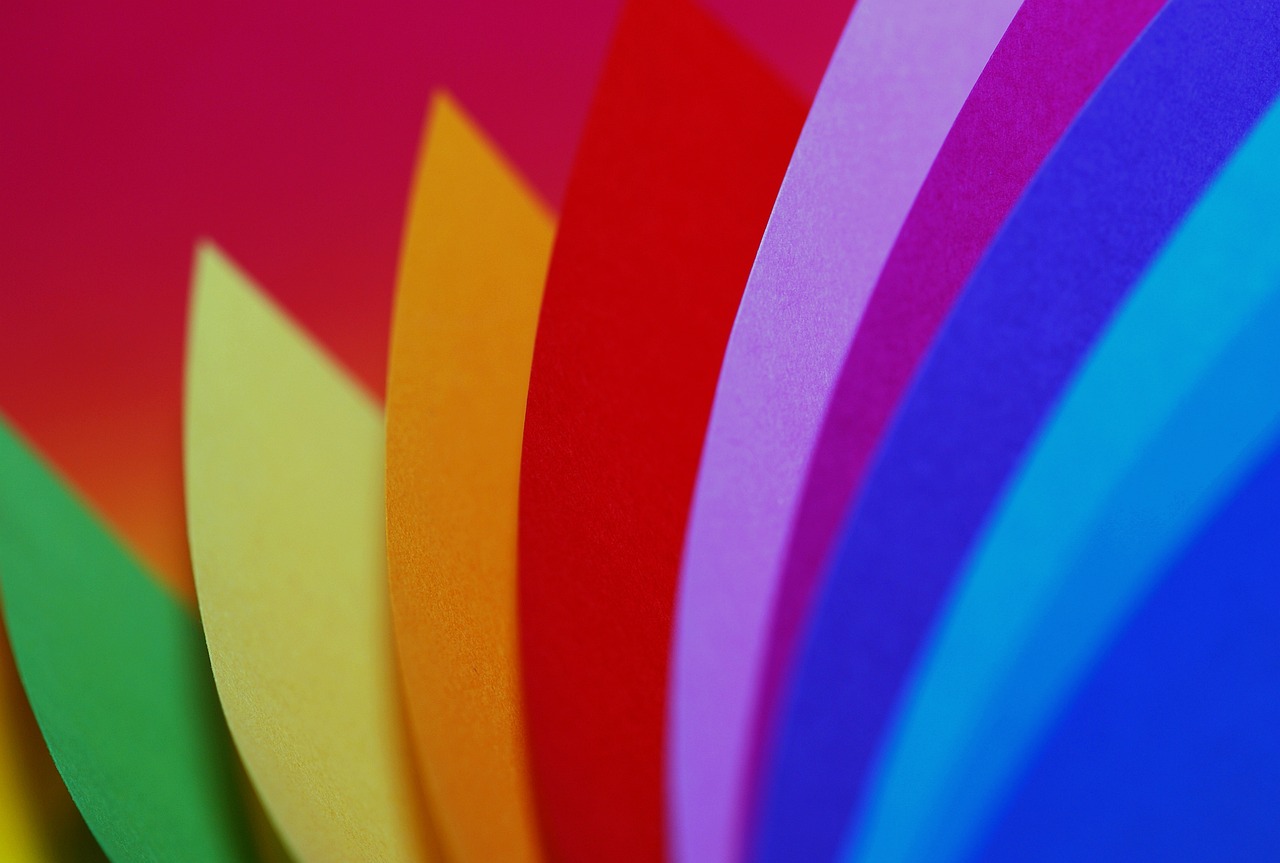
The History of Illusion Paintings
Illusion paintings have a rich and fascinating history that dates back to ancient civilizations. These mesmerizing artworks have evolved over the centuries, captivating audiences with their ability to deceive the eye and create a sense of depth on flat surfaces. The journey of illusion painting can be traced through various cultures and time periods, showcasing the ingenuity of artists who have mastered this art form.
In ancient Greece and Rome, artists began experimenting with techniques that would lay the groundwork for future illusionists. They utilized perspective and foreshortening to create lifelike representations in murals and frescoes. One of the most notable examples is the Villa of the Mysteries in Pompeii, where vibrant frescoes create the illusion of three-dimensional space. This early experimentation set the stage for the grander developments that would follow.
During the Renaissance, illusion painting truly flourished. Artists like Andrea Mantegna and Raphael pushed the boundaries of perspective, using linear perspective to draw viewers into their works. Mantegna's Camera degli Sposi is a prime example, where the ceiling appears to open up to the sky, creating a breathtaking illusion of space. This period marked a significant turning point, as artists began to understand the psychological impact of visual deception.
As we moved into the Baroque period, illusion painting took on new dimensions. Artists such as Giovanni Battista Gaulli and Corrado Giaquinto employed dramatic techniques to create awe-inspiring ceiling frescoes that seemed to burst forth from the confines of the room. Their work not only showcased technical prowess but also served to inspire wonder and spirituality in viewers, making the experience of art profoundly immersive.
Fast forward to the 19th and 20th centuries, and we see the emergence of trompe-l'œil, a French term meaning "deceive the eye." This technique became a hallmark of illusion painting, where artists like John Pugh and Robert Gonsalves created mind-bending murals that challenged perception. Their works often invite viewers to question reality and engage with the art on a deeper level, making the experience both interactive and thought-provoking.
Today, illusion paintings continue to evolve, bridging the gap between traditional techniques and modern technology. Artists are now exploring digital mediums and installations, pushing the boundaries of what illusion can mean in contemporary art. With the rise of social media, these artworks have gained even more visibility, captivating a global audience and inspiring a new generation of artists to explore the possibilities of visual deception.
In summary, the history of illusion paintings is a testament to the creativity and innovation of artists throughout the ages. From ancient frescoes to modern digital art, the ability to manipulate perception has fascinated and inspired countless viewers, making illusion painting a timeless and ever-evolving art form.
- What is illusion painting? Illusion painting is an art form that creates a visual trick, making two-dimensional surfaces appear three-dimensional.
- Who are some famous illusion painters? Notable illusion painters include Andrea Mantegna, John Pugh, and Robert Gonsalves.
- What techniques are used in illusion painting? Common techniques include trompe-l'œil, perspective manipulation, and color theory.
- How has illusion painting evolved over time? Illusion painting has evolved from ancient frescoes to modern digital art, incorporating new technologies and methods.
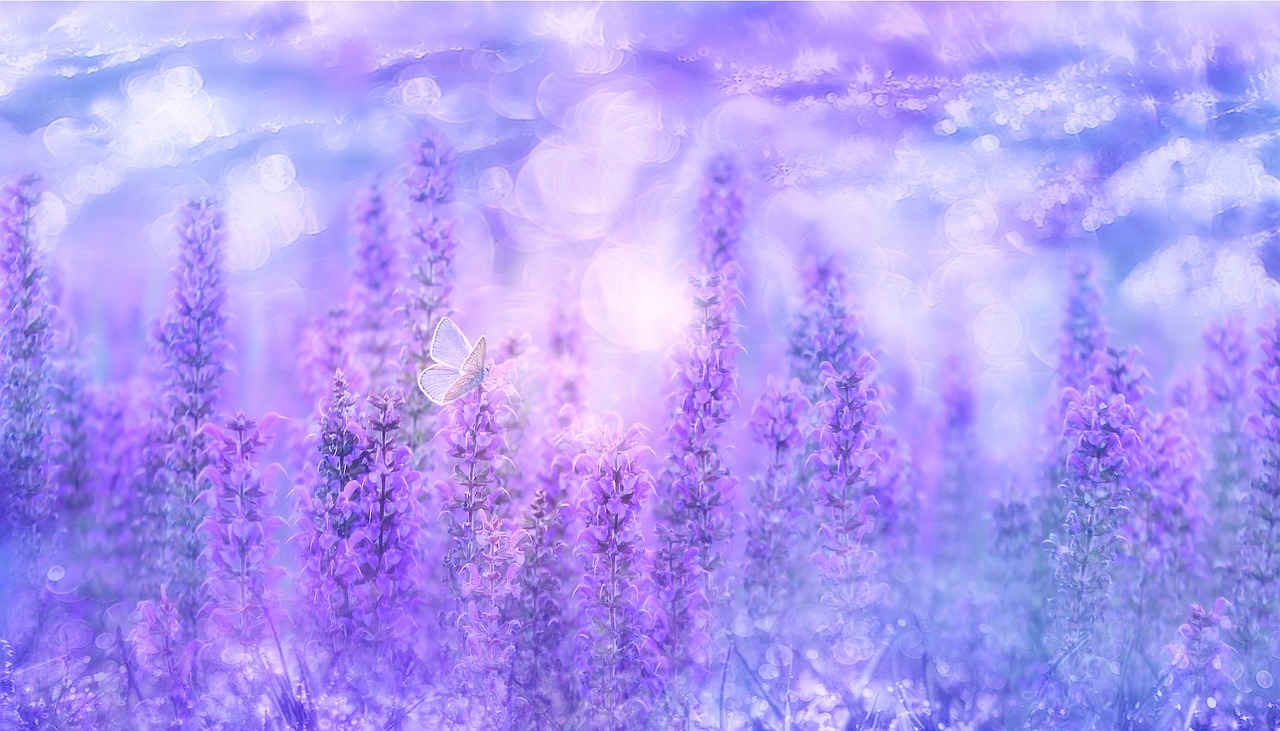
Techniques Used in Illusion Paintings
When we step into the mesmerizing realm of illusion paintings, we find ourselves captivated not just by the artwork itself, but by the intricate techniques that breathe life into these stunning visuals. Artists have honed their skills over centuries, employing various methods to create effects that can trick the eye and challenge our perceptions. From the ancient practice of trompe-l'œil to modern manipulations of perspective, each technique serves as a brushstroke in the broader canvas of artistic expression.
One of the most notable techniques is trompe-l'œil, a French term meaning "deceive the eye." This method relies on realistic imagery to create the illusion of three-dimensional space on a flat surface. Imagine walking past a mural that appears to have a window opening into another world—this is the magic of trompe-l'œil. Artists meticulously paint shadows, highlights, and intricate details to create depth, making viewers question what is real and what is merely paint on a wall.
Delving deeper into trompe-l'œil, we discover that the technique is not just about realistic representation but also about understanding light and shadow. By skillfully manipulating these elements, artists can create an illusion that feels tangible. For example, a painted archway can make a flat wall feel like it extends into an expansive hallway. This technique has been used throughout history, from the grand ceilings of Italian churches to contemporary street art that transforms urban landscapes.
Historically, trompe-l'œil has played a significant role in architecture and interior design. One of the most celebrated examples is the ceiling of the Palazzo della Civiltà Italiana in Rome, where the painted architecture creates a breathtaking visual experience. Additionally, artists like Andrea Pozzo in the 17th century used trompe-l'œil to create dramatic illusions in churches, where painted domes appeared to soar high above the viewer. These historical masterpieces not only showcase the technical prowess of the artists but also enhance the storytelling aspect of the space.
Fast forward to the present day, and we see modern artists embracing trompe-l'œil in innovative ways. Contemporary murals and installations often incorporate this technique, transforming mundane urban environments into vibrant, interactive experiences. For instance, street artists like John Pugh utilize trompe-l'œil to create immersive scenes that invite passersby to engage with the artwork. Digital art has also embraced this technique, allowing artists to create dynamic illusions that can be experienced on various platforms, from social media to virtual reality.
Another vital technique in illusion painting is perspective manipulation. This method involves using linear and atmospheric perspective to create a sense of depth and realism. Artists skillfully guide the viewer's eye through their work, often leading them into an intricate world of space and form. Linear perspective relies on vanishing points and horizon lines to create the illusion of distance, while atmospheric perspective uses color and clarity to depict objects further away as lighter and less defined. Together, these techniques form a powerful toolkit for artists, allowing them to construct immersive environments that draw viewers in.
In conclusion, the techniques used in illusion paintings are as diverse as they are fascinating. Whether through trompe-l'œil or perspective manipulation, artists continue to push the boundaries of what we perceive as reality. The magic of illusion painting lies not just in the final product, but in the skill, creativity, and history that underpin each stroke of the brush. As we explore these techniques, we gain a deeper appreciation for the artistry involved in creating illusions that captivate and inspire.
- What is trompe-l'œil? Trompe-l'œil is a technique that creates the optical illusion of three-dimensional objects on a flat surface, making them appear real.
- How do artists create depth in illusion paintings? Artists use techniques like linear and atmospheric perspective to manipulate how we perceive depth and space in their works.
- Can illusion paintings be found in modern art? Absolutely! Many contemporary artists use illusion techniques in murals, installations, and digital art to engage viewers.
- What impact do illusion paintings have on viewers? Illusion paintings evoke curiosity and wonder, challenging viewers’ perceptions and inviting them to explore the artwork in depth.

Trompe-l'œil Techniques
Trompe-l'œil, a French term meaning "deceive the eye," is not just a technique; it's a mesmerizing journey into the world of visual perception. Artists who master this technique create artworks that play with our senses, making us question what is real and what is merely an illusion. Imagine walking into a room where the ceiling appears to rise infinitely, or a wall that seems to open up to a breathtaking landscape. This is the magic of trompe-l'œil, where flat surfaces transform into portals of three-dimensionality.
At its core, trompe-l'œil relies on realistic imagery and meticulous attention to detail. Artists skillfully manipulate light, shadow, and perspective to trick the viewer's mind into seeing depth where there is none. For instance, by using chiaroscuro—the contrast of light and dark—an artist can create the illusion of volume and form. Additionally, the careful placement of elements within a composition can lead the eye to perceive a scene as more than just paint on a canvas.
One of the most fascinating aspects of trompe-l'œil is its versatility. Artists can employ various techniques to enhance the illusion, including:
- Linear Perspective: This technique uses converging lines to create a sense of depth. By drawing lines that lead to a vanishing point, artists can make objects appear to recede into the distance.
- Atmospheric Perspective: This method involves altering color and clarity to simulate distance. Objects that are farther away tend to be lighter and less defined, mimicking how we perceive the world.
- Shadow and Light Play: Shadows can ground objects in a space, making them feel anchored to the surface. By painting shadows accurately, artists can enhance the three-dimensional quality of their work.
Moreover, trompe-l'œil is not limited to traditional painting. Modern artists have adapted this technique into various mediums, including murals, street art, and even digital installations. For example, a mural on a city wall can transform an ordinary street into a bustling marketplace or a serene garden, inviting passersby to stop and engage with the artwork. This adaptability keeps trompe-l'œil relevant in today's artistic landscape, continually captivating audiences and inspiring new generations of artists.
As we delve deeper into the world of trompe-l'œil, we begin to appreciate not only the skill involved but also the profound impact these artworks can have on our perception of reality. They challenge us to look beyond the surface and engage with our surroundings in a more meaningful way. Whether in a grand cathedral or a cozy café, trompe-l'œil techniques invite us to lose ourselves in the magic of art, reminding us that sometimes, what we see is just the beginning of a much larger story.
- What is trompe-l'œil? Trompe-l'œil is a painting technique that uses realistic imagery to create optical illusions, making two-dimensional surfaces appear three-dimensional.
- Where can I see trompe-l'œil artworks? Trompe-l'œil can be found in various settings, including museums, public buildings, and even on the streets as part of murals and installations.
- How do artists create trompe-l'œil effects? Artists use techniques such as linear and atmospheric perspective, as well as careful manipulation of light and shadow, to create depth and realism.
- Is trompe-l'œil only used in traditional painting? No, trompe-l'œil techniques have been adapted in modern art forms, including murals, street art, and digital media, making it a versatile and contemporary practice.

deceive the eye,
This article explores the captivating world of illusion paintings, delving into techniques, historical significance, and the impact these mesmerizing artworks have on viewers and artists alike.
Illusion paintings have a rich history, dating back to ancient civilizations. This section examines their evolution through different cultures and time periods, highlighting key artists and movements that shaped the genre.
Artists employ various techniques to create stunning illusions. Here, we explore methods such as trompe-l'œil, perspective manipulation, and color theory that contribute to the enchanting effects of these artworks.
Trompe-l'œil, meaning deceive the eye, is a prominent technique in illusion painting. This fascinating method is all about tricking our brains into seeing depth and dimension where there is none. Imagine walking into a room and being greeted by a wall that seems to open up into a lush garden or a window that appears to look out onto a breathtaking landscape. That’s the magic of trompe-l'œil! Artists use realistic imagery and meticulous attention to detail to create these captivating illusions on flat surfaces. The technique is more than just an artistic gimmick; it’s a powerful way to engage viewers, making them question their perception of reality.
This section showcases notable historical examples of trompe-l'œil in architecture and painting, illustrating how artists have used this technique to enhance visual storytelling and spatial depth.
Modern artists continue to innovate with trompe-l'œil, applying it in contemporary settings. This subsection discusses how this technique is used in murals, installations, and digital art to captivate audiences.
Perspective manipulation is crucial in creating depth and realism. This part examines how artists utilize linear and atmospheric perspective to enhance the illusion of space in their paintings.
Illusion paintings evoke strong emotional responses and curiosity. This section discusses the psychological effects these artworks have on viewers, including the sense of wonder and the challenge of perception.
The interactive nature of illusion paintings invites viewers to engage actively. This subsection explores how artists design their works to encourage exploration and personal interpretation from the audience.
Illusion paintings have permeated popular culture, influencing various media. This section highlights their presence in films, advertising, and social media, showcasing their enduring appeal and relevance in contemporary society.
- What is trompe-l'œil? Trompe-l'œil is a technique in painting that creates the optical illusion of three-dimensionality on a flat surface.
- How do illusion paintings affect viewers? They can evoke strong emotional responses, challenge perceptions, and invite curiosity.
- Are there modern applications of trompe-l'œil? Yes, contemporary artists use trompe-l'œil in murals, installations, and digital art to create engaging experiences.

is a prominent technique in illusion painting. This subsection explains how artists use realistic imagery to create the illusion of three-dimensional space on a flat surface.
This article explores the captivating world of illusion paintings, delving into techniques, historical significance, and the impact these mesmerizing artworks have on viewers and artists alike.
Illusion paintings have a rich history, dating back to ancient civilizations. This section examines their evolution through different cultures and time periods, highlighting key artists and movements that shaped the genre.
Artists employ various techniques to create stunning illusions. Here, we explore methods such as trompe-l'œil, perspective manipulation, and color theory that contribute to the enchanting effects of these artworks.
Trompe-l'œil, meaning "deceive the eye," is a prominent technique in illusion painting. This subsection explains how artists use realistic imagery to create the illusion of three-dimensional space on a flat surface.
At its core, trompe-l'œil is all about visual deception. Artists meticulously craft images that trick the viewer into perceiving depth and volume where there is none. Imagine walking past a wall that appears to have a window, complete with intricate details like curtains and a scenic view beyond. This isn't a real window; it's an artwork that plays with your perception. By using techniques such as shading, perspective, and color blending, artists can create a strikingly realistic representation that feels tangible.
One of the key elements in trompe-l'œil is the understanding of light and shadow. Artists study how light interacts with objects in the real world, applying this knowledge to their paintings. For instance, a well-placed shadow can make an object seem as if it is protruding from the wall, enhancing the three-dimensional effect. Additionally, the use of linear perspective helps to guide the viewer's eye, creating a sense of depth that pulls them into the artwork.
Moreover, trompe-l'œil is not limited to traditional canvases; it can be applied in various settings, including murals and architectural designs. In fact, many buildings feature trompe-l'œil elements that transform flat surfaces into captivating visual experiences. Artists often collaborate with architects to create immersive environments that blend art and architecture seamlessly.
This section showcases notable historical examples of trompe-l'œil in architecture and painting, illustrating how artists have used this technique to enhance visual storytelling and spatial depth.
Modern artists continue to innovate with trompe-l'œil, applying it in contemporary settings. This subsection discusses how this technique is used in murals, installations, and digital art to captivate audiences.
Perspective manipulation is crucial in creating depth and realism. This part examines how artists utilize linear and atmospheric perspective to enhance the illusion of space in their paintings.
Illusion paintings evoke strong emotional responses and curiosity. This section discusses the psychological effects these artworks have on viewers, including the sense of wonder and the challenge of perception.
The interactive nature of illusion paintings invites viewers to engage actively. This subsection explores how artists design their works to encourage exploration and personal interpretation from the audience.
Illusion paintings have permeated popular culture, influencing various media. This section highlights their presence in films, advertising, and social media, showcasing their enduring appeal and relevance in contemporary society.
- What is trompe-l'œil?
Trompe-l'œil is a technique in painting that creates the optical illusion of three-dimensionality on a flat surface. - How do artists create depth in illusion paintings?
Artists use techniques such as light and shadow, perspective manipulation, and color theory to create a sense of depth. - Can trompe-l'œil be used in modern art?
Yes! Many contemporary artists use trompe-l'œil techniques in murals, installations, and digital art to engage audiences.

Historical Examples of Trompe-l'œil
Trompe-l'œil, a French term meaning "deceive the eye," has been a fascinating technique in art for centuries. Its historical significance can be traced back to ancient civilizations, where artists sought to create an illusion of reality that captivated viewers. One of the earliest known examples of trompe-l'œil can be found in the frescoes of ancient Rome, particularly in the Villa of Livia, where painted gardens give the illusion of an expansive outdoor space. This technique not only showcased the skill of the artists but also transformed the perception of the environment within enclosed spaces.
During the Renaissance, trompe-l'œil gained immense popularity, especially in Italy. Artists like Andrea Mantegna and Correggio pushed the boundaries of this technique, creating ceilings that appeared to open up to the sky. Mantegna's Camera degli Sposi in Mantua is a stunning example where he painted an elaborate ceiling that tricks the viewer into believing they are looking up at a dome filled with angels and mythological figures. The use of perspective and foreshortening in this piece was revolutionary and set a standard for future artists.
Moving into the Baroque period, artists such as Giovanni Battista Gaulli, also known as Baciccio, took trompe-l'œil to new heights. His work in the Church of the Gesù in Rome features a ceiling that appears to burst open, allowing a flood of heavenly light and figures to pour into the viewer's space. This dramatic effect not only emphasized the spiritual experience but also showcased the artist's mastery of illusion.
In the 18th century, the technique continued to evolve with artists like Jean-Baptiste-Siméon Chardin and his use of trompe-l'œil in still life paintings. Chardin's ability to make objects appear as though they were three-dimensional, resting on the surface of the canvas, captivated audiences and influenced future generations of artists.
In modern times, trompe-l'œil has found its way into public spaces, with murals and installations that challenge our perception of reality. Artists like John Pugh create large-scale murals that seem to extend the architecture of buildings, inviting viewers to explore the boundaries between reality and illusion. This contemporary approach maintains the essence of trompe-l'œil while incorporating modern themes and techniques.
To summarize, trompe-l'œil has a rich history filled with remarkable examples that highlight the evolution of this captivating art form. From ancient frescoes to modern murals, the ability to deceive the eye continues to enchant and inspire both artists and audiences alike. Below is a table summarizing some key historical examples of trompe-l'œil:
| Artist | Work | Location | Period |
|---|---|---|---|
| Andrea Mantegna | Camera degli Sposi | Mantua, Italy | Renaissance |
| Giovanni Battista Gaulli | Ceiling of the Church of the Gesù | Rome, Italy | Baroque |
| John Pugh | Various Murals | Various Locations | Modern |
| Jean-Baptiste-Siméon Chardin | Still Life Paintings | France | 18th Century |
These historical examples not only showcase the technical prowess of the artists but also reflect the cultural and artistic movements of their time. Trompe-l'œil remains a powerful tool for artists to engage viewers, inviting them to see beyond the surface and explore the depths of creativity.
- What is trompe-l'œil? Trompe-l'œil is an art technique that uses realistic imagery to create the optical illusion that depicted objects exist in three dimensions.
- Where did trompe-l'œil originate? The technique has roots in ancient civilizations, with notable examples found in Roman frescoes.
- Who are some famous artists known for trompe-l'œil? Artists like Andrea Mantegna, Giovanni Battista Gaulli, and modern muralist John Pugh are well-known for their trompe-l'œil works.
- How is trompe-l'œil used today? Contemporary artists use trompe-l'œil in murals, installations, and digital art to create engaging visual experiences.
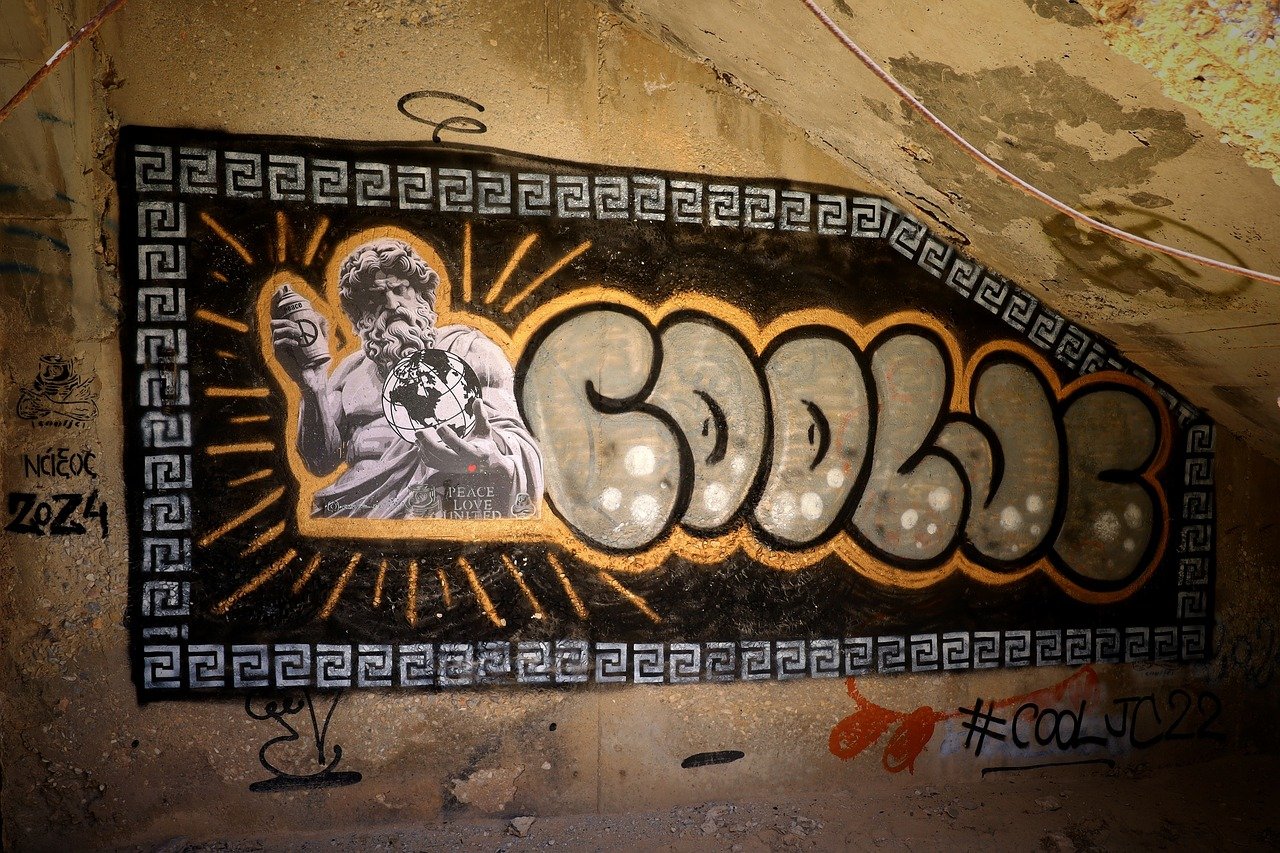
Modern Applications of Trompe-l'œil
The magic of trompe-l'œil is not just a relic of the past; it has found a vibrant home in the modern world, captivating audiences and transforming spaces in ways that are both innovative and surprising. Today, artists harness this age-old technique to create immersive experiences that blur the lines between reality and illusion. From urban murals to digital installations, the applications of trompe-l'œil are as diverse as they are enchanting.
One of the most exciting modern applications is found in public art. Cities around the globe have embraced trompe-l'œil murals to enhance urban environments. These murals often transform dull walls into vibrant narratives, inviting passersby to engage with the art in unexpected ways. For instance, a flat wall can be painted to resemble an open window, creating a playful dialogue with the surrounding architecture. This interaction not only beautifies the space but also encourages community involvement and appreciation for local art.
Moreover, interior design has also seen a resurgence of trompe-l'œil techniques. Homeowners and designers are using this art form to create the illusion of larger spaces or to add depth to otherwise flat surfaces. Imagine walking into a room where the ceiling appears to soar into the sky or a wall that seems to recede into a lush landscape. These designs can dramatically change the perception of a space, making it feel more expansive and inviting.
In the realm of digital art, trompe-l'œil has evolved into a thrilling medium that combines traditional techniques with cutting-edge technology. Artists are now creating interactive installations that respond to viewer movements, further enhancing the illusion of depth and space. For example, a digital display might simulate a three-dimensional object that appears to rise and fall as viewers walk by, engaging them in a dynamic experience that challenges their perception of reality.
In addition to these applications, trompe-l'œil has made its way into advertising and branding. Companies leverage the power of illusion to capture attention and create memorable marketing campaigns. By incorporating trompe-l'œil elements into their advertisements, brands can evoke curiosity and intrigue, making their messages stand out in a crowded marketplace. This technique not only enhances visual appeal but also encourages viewers to interact with the advertisement, leading to a deeper connection with the brand.
As we can see, the modern applications of trompe-l'œil are not just about creating stunning visuals; they are about creating experiences that resonate with audiences on multiple levels. Whether through large-scale murals that transform public spaces, innovative interior designs that redefine home aesthetics, or digital art that captivates and engages, trompe-l'œil continues to evolve and inspire. It's a reminder that art is not static but a living, breathing entity that adapts to our changing world.
- What is trompe-l'œil? Trompe-l'œil is a painting technique that creates the optical illusion of three dimensions on a flat surface.
- How can I incorporate trompe-l'œil in my home? You can hire a muralist or use wallpaper that features trompe-l'œil designs to add depth and interest to your space.
- Are there any famous examples of trompe-l'œil? Yes, notable examples include the ceiling of the Palazzo Farnese in Rome and various street art murals around the world.
- Can trompe-l'œil be used in digital art? Absolutely! Many contemporary artists use digital platforms to create interactive trompe-l'œil experiences.
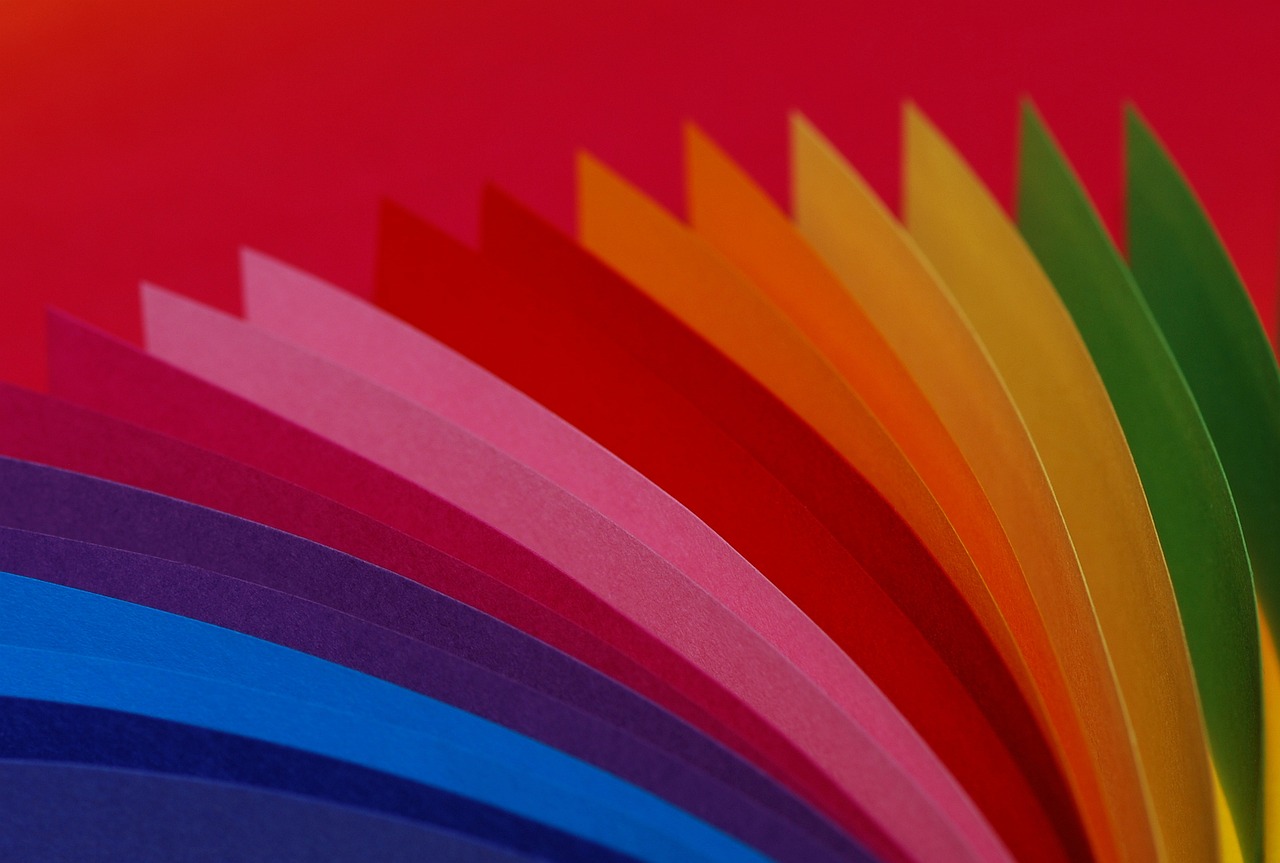
Perspective Manipulation
When it comes to creating depth and realism in art, plays a pivotal role. This technique allows artists to guide the viewer's eye, leading them through a visual narrative that feels almost three-dimensional. Imagine walking into a room where the walls seem to stretch and the ceiling appears to soar—this is the magic of perspective manipulation. By employing methods such as linear perspective and atmospheric perspective, artists can craft scenes that not only captivate but also deceive the viewer’s perception of space.
Linear perspective is perhaps the most recognized technique, often associated with the famous vanishing point. Picture a long, straight road disappearing into the horizon; the parallel lines converge at a single point, creating an illusion of depth. This technique was perfected during the Renaissance, with masters like Leonardo da Vinci and Raphael leading the charge. They understood that by manipulating lines and angles, they could create a sense of realism that was previously unattainable.
On the other hand, atmospheric perspective relies on the subtlety of color and clarity. As objects recede into the background, they lose contrast and detail, appearing lighter and bluer. This is akin to how distant mountains look hazy against the sky. Artists utilize this technique to evoke a sense of vastness, drawing the viewer into the scene. By combining both linear and atmospheric perspectives, artists can create a dynamic visual experience that feels alive.
To illustrate the impact of perspective manipulation, consider the following table showcasing famous artworks that employ these techniques:
| Artwork | Artist | Technique Used |
|---|---|---|
| The Last Supper | Leonardo da Vinci | Linear Perspective |
| School of Athens | Raphael | Linear Perspective |
| The Water Lilies | Claude Monet | Atmospheric Perspective |
| View of Toledo | El Greco | Atmospheric Perspective |
As we navigate through the world of illusion paintings, it's essential to appreciate how these techniques work in harmony to enhance the viewer's experience. Artists are not merely painting; they are crafting a world that invites us to step in and explore. The skillful manipulation of perspective can transform a flat canvas into a portal of exploration, making us question our own perceptions of reality. So, the next time you find yourself gazing at an illusion painting, take a moment to consider the intricate dance of lines and colors that brought that piece to life.
- What is perspective manipulation? - Perspective manipulation is a technique used in art to create the illusion of depth and space, making two-dimensional works appear three-dimensional.
- How does linear perspective work? - Linear perspective involves the use of parallel lines that converge at a vanishing point on the horizon, creating a sense of depth.
- What is atmospheric perspective? - Atmospheric perspective refers to the technique of creating depth by altering color and clarity; distant objects appear lighter and less detailed.
- Can perspective manipulation be used in modern art? - Absolutely! Many contemporary artists utilize these techniques in various forms, including murals, installations, and digital art.
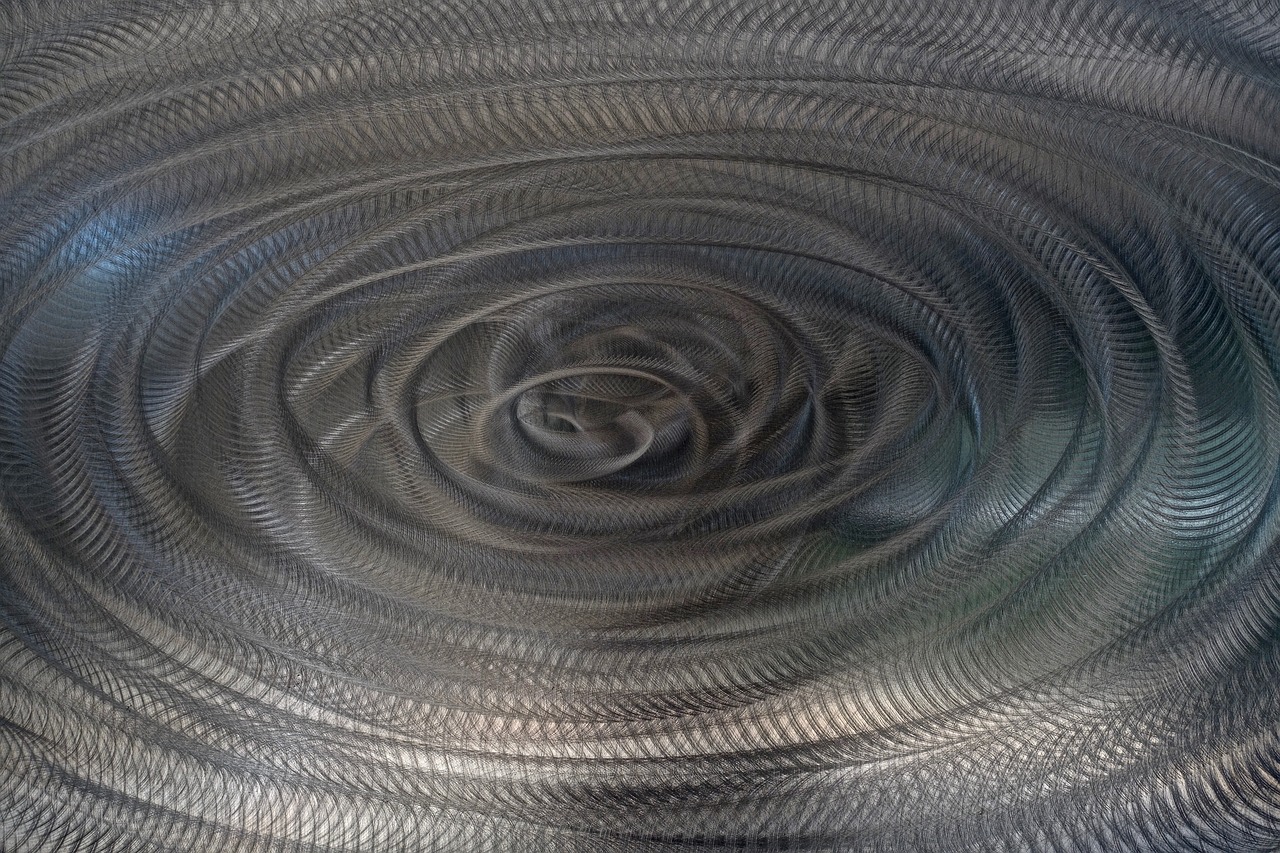
The Impact of Illusion Paintings on Viewers
Illusion paintings are not just mere visual tricks; they are gateways into a realm where perception and reality intertwine. When viewers encounter these captivating artworks, they often experience a jolt of curiosity and a sense of wonder that is hard to replicate with other art forms. The psychological effects of these pieces can be profound, leading to emotional responses that range from delight to confusion. Have you ever stood before a painting and felt as though you could step right into it? That’s the magic of illusion art!
One of the most fascinating aspects of illusion paintings is their ability to challenge our perceptions. They invite us to question what we see and how we interpret visual information. This engagement with the artwork can lead to a deeper appreciation of the artist's skill and creativity. For many, it’s not just about admiring a beautiful piece; it’s about unraveling the layers of complexity that lie within. How do they do that? What techniques are at play? These questions can spark a dialogue between the viewer and the artwork, transforming a passive experience into an interactive exploration.
Moreover, the emotional responses elicited by illusion paintings can vary widely among different viewers. Some may feel a sense of awe as they marvel at the technical prowess required to create such lifelike images, while others might experience a thrilling sense of disorientation as they grapple with the illusion itself. This emotional rollercoaster can be likened to watching a magician perform a trick—there's a moment of disbelief followed by the realization of the cleverness behind it. Such experiences not only enhance our appreciation of the art but also enrich our understanding of visual perception.
In addition to emotional engagement, illusion paintings often encourage viewers to interact with the artwork in unique ways. Many artists design their pieces to be viewed from specific angles or distances, prompting the audience to move around and explore the work. This interactive nature adds an element of playfulness, inviting viewers to become active participants rather than mere spectators. For instance, some contemporary illusionists create murals that change appearance based on the viewer's position, making every viewing experience distinct and personal.
The impact of illusion paintings extends beyond the gallery walls, permeating popular culture and influencing various media. From films that employ visual effects to create stunning illusions, to advertisements that use similar techniques to capture attention, the essence of illusion art is everywhere. In social media, artists share their works, often going viral as viewers are captivated by the sheer ingenuity of these pieces. This widespread appeal underscores the relevance of illusion paintings in contemporary society, as they continue to inspire and engage audiences of all ages.
In summary, illusion paintings hold a unique place in the art world. They not only challenge our perceptions but also evoke strong emotional responses and encourage interactive engagement. As we navigate through these mesmerizing artworks, we find ourselves questioning reality and discovering new dimensions of creativity. Isn’t that what art is all about? The ability to provoke thought, inspire wonder, and connect us to the world in unexpected ways?
- What are illusion paintings?
Illusion paintings are artworks designed to deceive the viewer's eye, creating a sense of depth and realism that tricks the mind into perceiving three dimensions on a two-dimensional surface.
- How do artists create illusions in their paintings?
Artists use various techniques such as trompe-l'œil, perspective manipulation, and color theory to craft illusions that engage viewers and enhance the visual experience.
- Why do illusion paintings evoke strong emotional responses?
The complexity and skill involved in creating these artworks can lead to feelings of awe and wonder, prompting viewers to engage more deeply with the piece and question their perceptions.
- Where can I see illusion paintings?
Illusion paintings can be found in art galleries, museums, and public spaces. Additionally, many contemporary artists share their works on social media platforms, making them accessible to a wider audience.
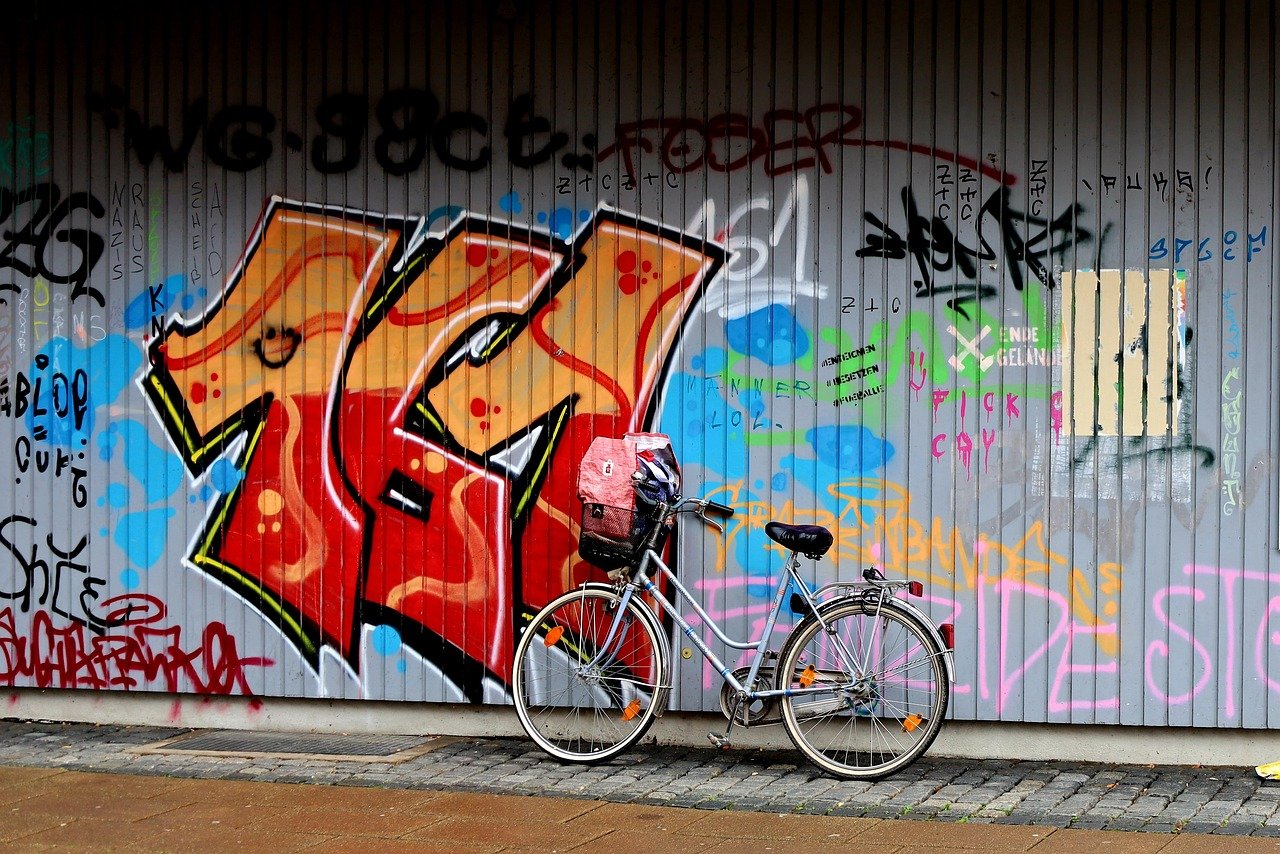
Viewer Engagement and Interaction
When it comes to illusion paintings, the magic doesn't just lie in the artwork itself; it also resides in the way these pieces draw viewers into their world. Imagine standing before a painting that seems to leap off the canvas, inviting you to step closer and explore its depths. This is the essence of viewer engagement in illusion art. Artists have mastered the ability to create a dialogue between the artwork and the audience, making each piece a unique experience that encourages interaction.
One of the key aspects of viewer engagement is the element of surprise. Illusion paintings often challenge our perceptions, prompting us to question what we see. For instance, a painting that appears to be a flat surface might reveal intricate details upon closer inspection, transforming our understanding of the piece. This interaction creates a sense of wonder and curiosity, which is vital for a memorable viewing experience. It’s like peeling back the layers of an onion; the deeper you go, the more you discover.
Moreover, artists are increasingly designing their illusion paintings with interactivity in mind. Many contemporary works invite viewers to become part of the art, blurring the lines between observer and participant. For example, some murals are created with augmented reality (AR) technology, allowing viewers to use their smartphones to see animations or additional layers of the artwork. This not only enhances the visual experience but also fosters a deeper connection between the viewer and the art.
Furthermore, the social aspect of viewing illusion paintings cannot be overlooked. In an age dominated by social media, these artworks often become the centerpiece of shared experiences. People flock to galleries and exhibitions not just to see the art but to capture and share their reactions online. This phenomenon has transformed how we perceive art; it’s no longer a solitary experience but rather a communal one. When individuals share their interactions with illusion paintings, it creates a ripple effect, inspiring others to engage and explore these mesmerizing works.
In addition to social media, the physical space where illusion paintings are displayed plays a crucial role in viewer engagement. Museums and galleries are now curating their spaces to encourage exploration and interaction. By designing layouts that guide visitors through a journey of discovery, they enhance the overall experience. Imagine walking through an exhibit where each corner reveals a new illusion, compelling you to pause, reflect, and engage with the art on a personal level.
To sum it up, the engagement and interaction that illusion paintings foster are pivotal to their impact. They challenge perceptions, invite exploration, and create communal experiences that resonate with audiences. As artists continue to innovate and push the boundaries of this genre, we can expect even more dynamic interactions between art and viewer, making the world of illusion painting an ever-evolving and captivating realm.
- What are illusion paintings? Illusion paintings are artworks that create visual tricks, making two-dimensional surfaces appear three-dimensional or altering perceptions of reality.
- How do artists create illusions? Artists use techniques such as trompe-l'œil, perspective manipulation, and color theory to craft stunning visual effects that deceive the eye.
- Why are illusion paintings popular? They captivate audiences by challenging perceptions, evoking curiosity, and inviting active engagement with the artwork.
- Can illusion paintings be interactive? Yes! Many modern illusion paintings incorporate technology, such as augmented reality, to enhance viewer interaction.
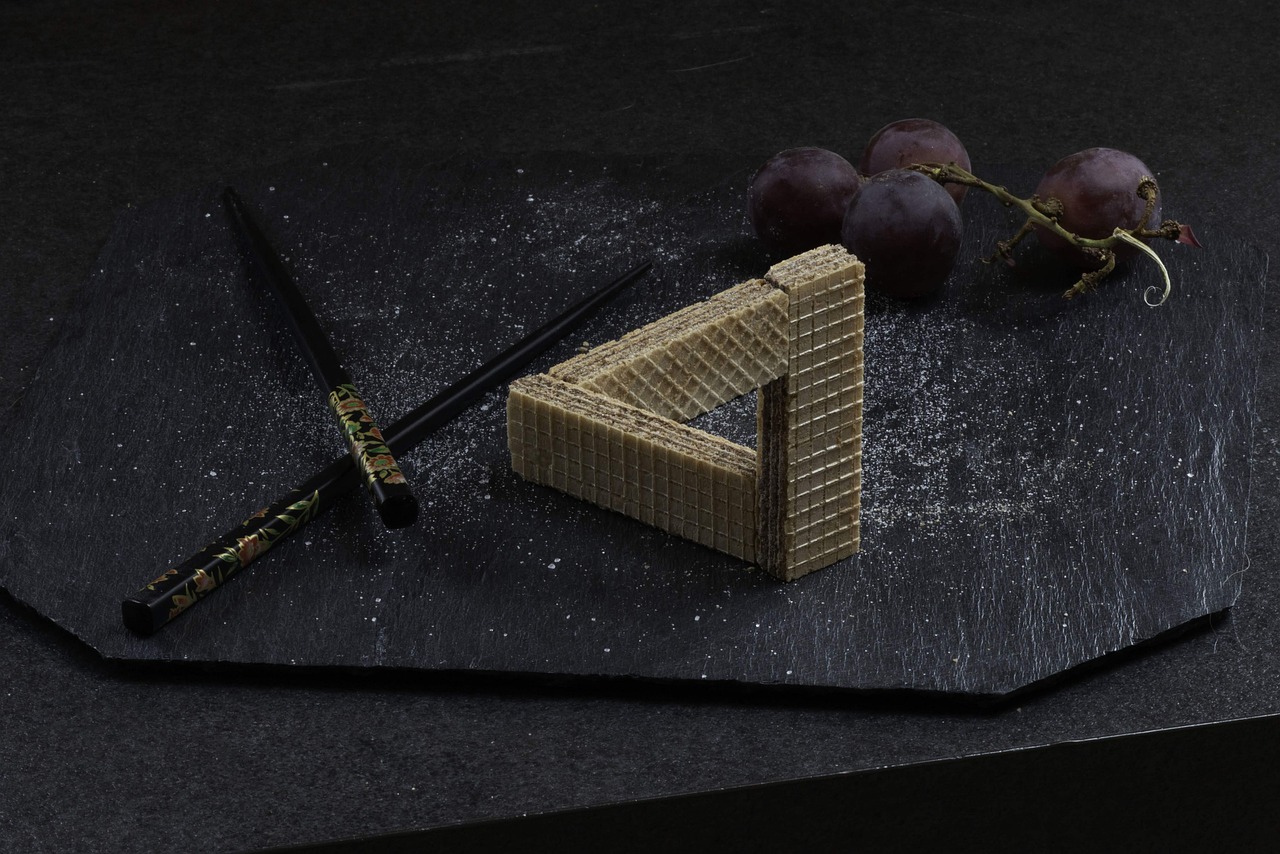
Illusion Paintings in Popular Culture
Illusion paintings have woven themselves into the very fabric of popular culture, captivating audiences across various mediums. From blockbuster films to viral social media posts, these mesmerizing artworks challenge our perceptions and ignite our imaginations. Have you ever watched a movie where the set design seemed to defy the laws of physics? Or scrolled through your Instagram feed and stumbled upon a mind-bending mural that made you question reality? These are just a few examples of how illusion paintings have permeated contemporary life.
In cinema, filmmakers often use illusionary techniques to create visually stunning scenes that leave audiences in awe. Iconic films like Inception and The Matrix utilize visual effects that mimic the principles of illusion painting, making the impossible seem possible. The way these films manipulate space and perspective mirrors the techniques used by traditional artists, demonstrating the lasting influence of illusion art on modern storytelling.
Moreover, illusion paintings have found a cozy spot in the realm of advertising. Brands are constantly looking for innovative ways to grab attention, and what better way than to create an ad that tricks the eye? For instance, a recent campaign featured a billboard that appeared to have a three-dimensional object bursting out of it, drawing in curious passersby. This blend of art and marketing not only engages viewers but also creates a memorable experience that resonates long after they've seen it.
Social media platforms like Instagram and TikTok have become breeding grounds for illusion art. Artists showcase their work through short videos and images, often demonstrating the creation process in real-time. This interactive element invites viewers to engage with the artwork, sparking conversations and encouraging personal interpretations. As users share these captivating pieces, they contribute to a growing community that appreciates the beauty and complexity of illusion paintings.
In addition to films and advertising, illusion paintings have made their mark in the world of video games. Game developers often employ perspective manipulation and trompe-l'œil techniques to create immersive environments that challenge players' perceptions. Games like Portal and Antichamber are prime examples, where the manipulation of space and reality becomes a core gameplay mechanic, allowing players to experience the thrill of illusion firsthand.
As we navigate through this visually driven culture, it's clear that illusion paintings are more than just art; they are a bridge connecting various forms of media and expression. Whether you encounter them in a gallery, on a billboard, or through your smartphone screen, these artworks continue to captivate and inspire. The challenge of perception they present is not just an artistic endeavor; it's a reflection of our ever-evolving relationship with reality itself.
- What are illusion paintings? Illusion paintings are artworks designed to deceive the viewer's eye, creating the impression of three-dimensional space on a flat surface.
- How have illusion paintings influenced modern media? They have inspired visual effects in films, innovative advertising techniques, and immersive environments in video games.
- Can anyone create illusion paintings? Yes! With practice and understanding of techniques like trompe-l'œil and perspective manipulation, anyone can learn to create their own illusion art.
Frequently Asked Questions
- What are illusion paintings?
Illusion paintings are artworks designed to create a visual trick that deceives the viewer's eye, making them perceive depth, movement, or three-dimensionality on a flat surface. These captivating pieces often leave audiences in awe, prompting them to question their perception of reality.
- How did illusion paintings originate?
The history of illusion paintings traces back to ancient civilizations, where artists utilized techniques to create realistic imagery. Over the centuries, various cultures and movements have contributed to the evolution of this art form, showcasing the ingenuity of artists throughout history.
- What techniques are commonly used in illusion paintings?
Artists employ several techniques in illusion paintings, with trompe-l'œil being one of the most prominent. Other methods include perspective manipulation and color theory, which together enhance the enchanting effects and visual depth of these artworks.
- What is trompe-l'œil?
Trompe-l'œil, which translates to "deceive the eye," is a technique where artists create realistic images that trick the viewer into perceiving three-dimensional space on a flat surface. This method has been used in both paintings and architectural designs to create stunning visual narratives.
- Are there modern applications of trompe-l'œil?
Absolutely! Modern artists have adapted trompe-l'œil techniques in various contemporary settings, including murals, installations, and digital art. These innovative applications continue to captivate audiences and push the boundaries of visual storytelling.
- How do artists manipulate perspective in their paintings?
Artists manipulate perspective through techniques like linear and atmospheric perspective. By skillfully applying these methods, they create depth and realism, enhancing the illusion of space and inviting viewers to immerse themselves in the artwork.
- What emotional responses do illusion paintings evoke?
Illusion paintings can evoke strong emotional responses, such as wonder and curiosity. The captivating nature of these artworks challenges viewers' perceptions, inviting them to explore the boundaries of reality and imagination.
- How do illusion paintings engage viewers?
The interactive nature of illusion paintings encourages viewers to engage actively with the artwork. Artists often design their pieces to invite exploration and personal interpretation, making the viewing experience more immersive and meaningful.
- Where can we see illusion paintings in popular culture?
Illusion paintings have made their mark in popular culture, influencing various media such as films, advertising, and social media. Their enduring appeal and relevance continue to inspire artists and captivate audiences around the world.



















